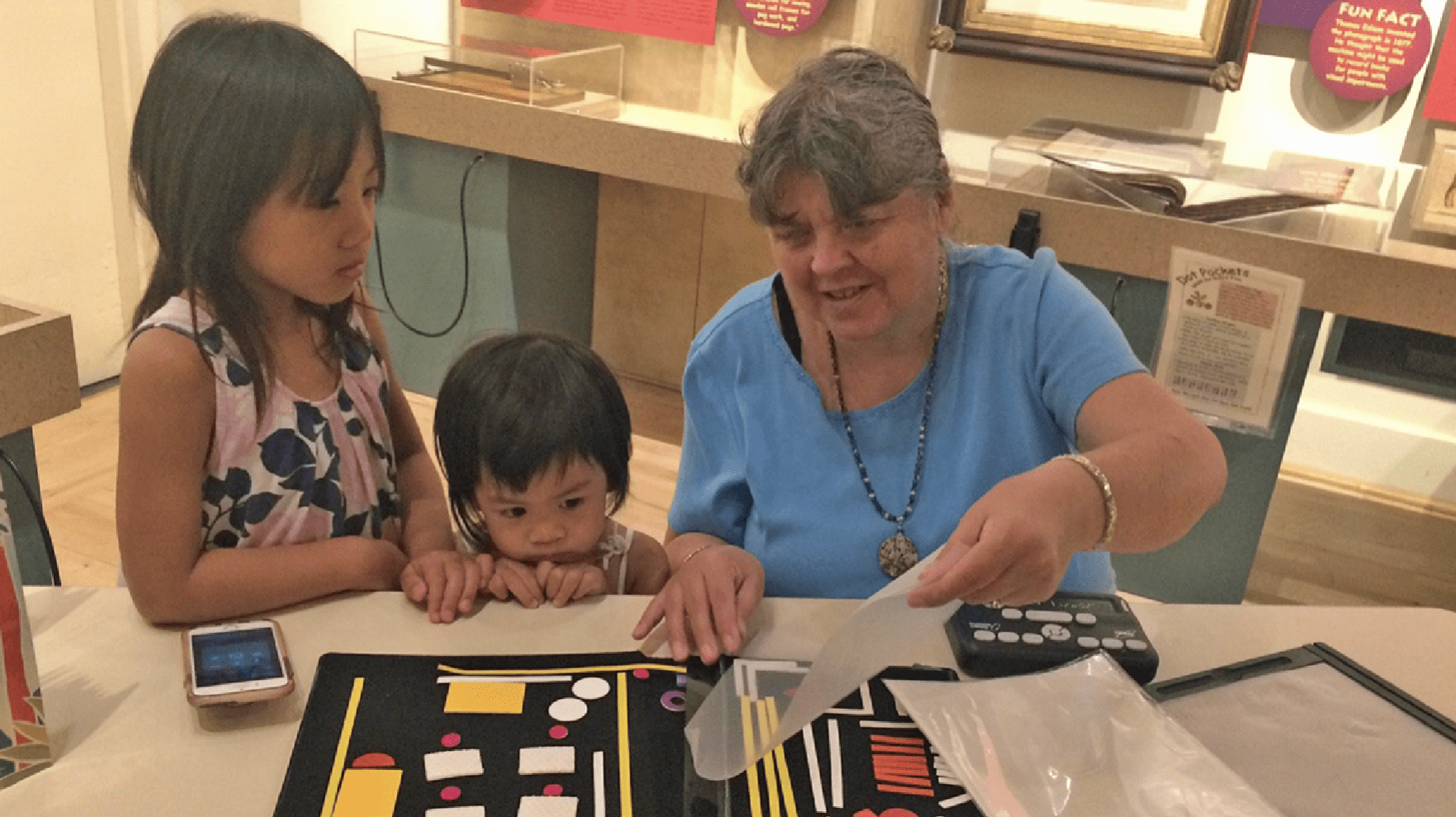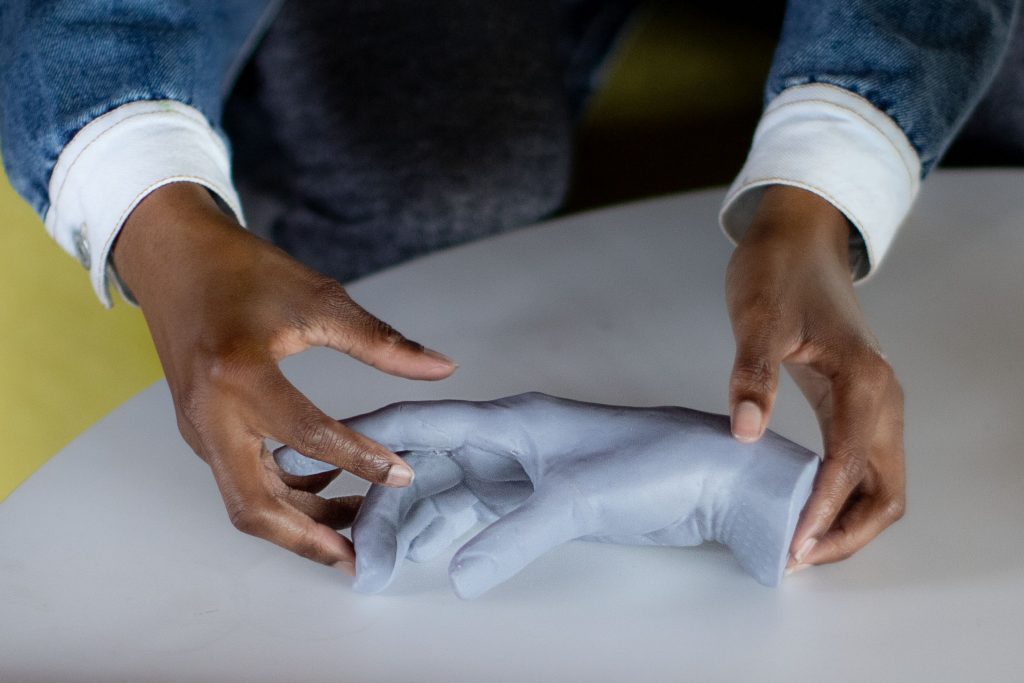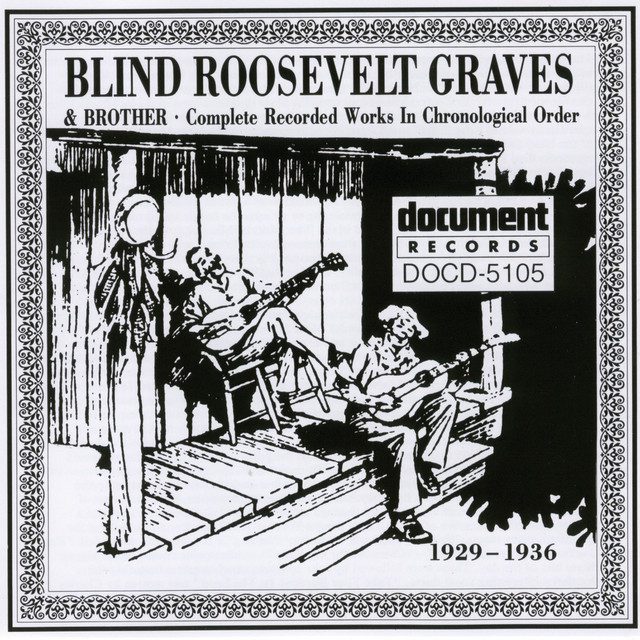To ensure gift delivery by 12/25, please place orders via UPS shipping no later than 12/17.
CloseNational Museum Education Associates Appreciation Day

There is a National Bubble Wrap Appreciation Day (January 31), a National Squirrel Appreciation Day (January 21), even a National Cheese Fondue Day (April 11), but there is no National Museum Education Associates Appreciation Day. So we invented one. July 19th is henceforth National Museum Education Associates Appreciation Day, and we invited our ten associates to a catered lunch. It was an opportunity for them to meet our two new museum employees, to chat and share stories with each other, and to plan the next year. It was also a celebration of the reopening of our museum.
The education associates, who are all blind or visually impaired, help teach museum events, workshops, outreach programs, and more. They are the heart of the museum education program. Sure, I can tell our visitors about the history of education for the blind, about Louis Braille and Helen Keller; I can demonstrate how to use a Taylor slate, a braillewriter, and a slate and stylus. But I can’t demonstrate what it’s like to be blind in a world that caters to the sighted.
What would I do without multi-talented Barbara, writer, actress, vocalist, violinist, and good friend, from whom I have learned so much? She’s played the music of Pa Ingalls for our Mary Ingalls birthday celebrations, recreated whale sounds on her violin for kids in the NFB Bell Academy, and, once, for an Indiana music teacher who decided to teach her students the braille music code, she led a sing-along in the gymnasium.
And Darren, charismatic, articulate, always interesting. He’s a mesmerizing speaker, and I remember well a group of elementary students who just couldn’t believe he was blind. When Darren’s helping with a program, I usually just introduce him then stand back and let him do his thing.
Every one of our education associates brings their unique skills and talents to share generously with participants in our workshops, events, and outreach programs. There’s Terrie, whose active mind must master every bit of new technology she discovers; Kathy, whose warmth and generous nature can calm even a bunch of teenage boys; ebullient Sue Ellen; and Deb and Patti, whose patient and loving ways with small children are a wonder. Deb’s a crafter; she knits and she crochets, and she once made a warm golden scarf out of the fur of her Golden Retriever guide dog. Ian, articulate and expansive, is in demand. We did Blindness 101 workshops for several nurses-in-training who scheduled their visits around Ian’s availability. Then there’s Cathy, our low vision rep, who probably doesn’t realize how much her talents in organization and attention to detail are worth to me.
Hellena, the newest member of our group, joined me for her first workshop last Saturday. We taught a group of girl scouts a bit about Louis Braille and then we showed them how to read and write simple braille. Hellena loved it. The kids loved her, especially when she read their secret braille messages out loud. On Tuesday, afternoon, she was back in the museum, reading every museum label and investigating every artifact. “I want to memorize it all,” she told me, “so I’ll be able to answer their questions.”
Most people in the US have never met a person who is blind. I am so glad the museum has these ten people to count on, to tell our visitors that yes, people who are blind can knit and crochet, they can play a musical instrument, they can shop, cook, excel in sports, trouble-shoot computers and phones, and that yes, people who are blind hold jobs. And in everything they do for the museum, they contribute enormously to our mission of “changing minds, attitudes and actions toward blindness.”
Share this article.
Related articles

Designed to Include: The Dot Experience Begins with Accessibility
Every aspect of The Dot Experience, from the elevator shaft to the carpeting is being carefully planned, built, and tested...

“Sacred Soil: The Piney Woods School Story” Keeps Legacy Alive
A new Hulu documentary, “Sacred Soil: The Piney Woods School Story,” highlights the Piney Woods Country Life School located in...

Blind Roosevelt Graves and the First Recorded Rock & Roll
Did you know that the first recorded rock n’ roll is attributed to a blind musician? The musical group, Blind...
